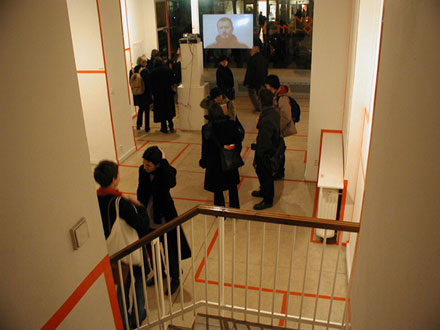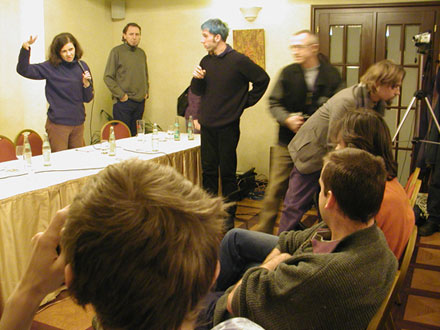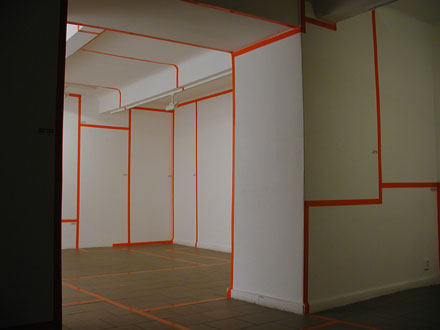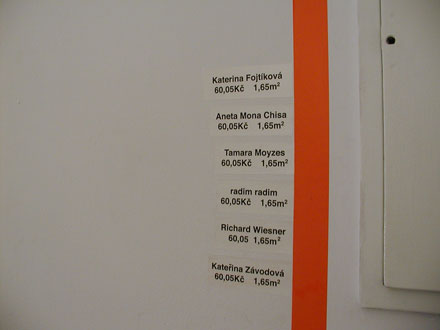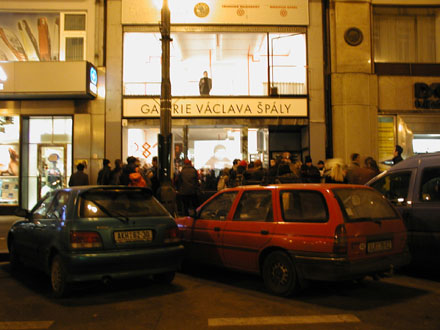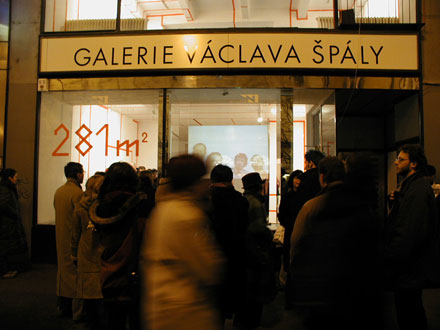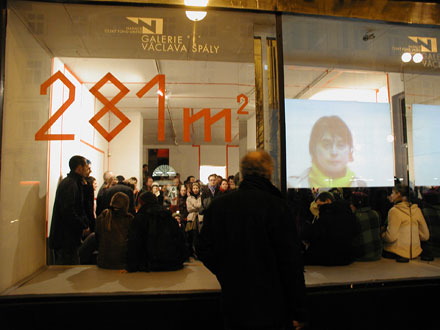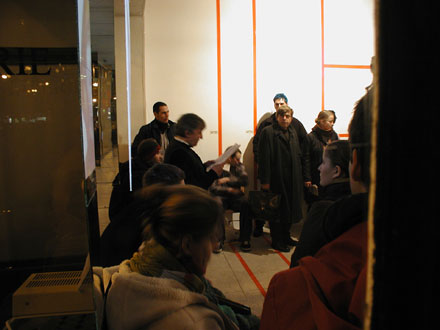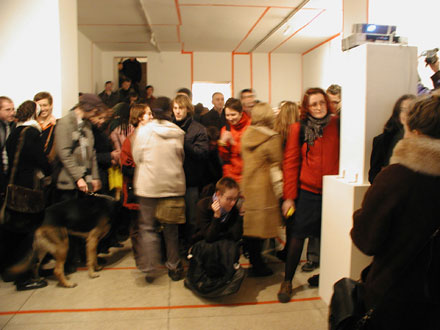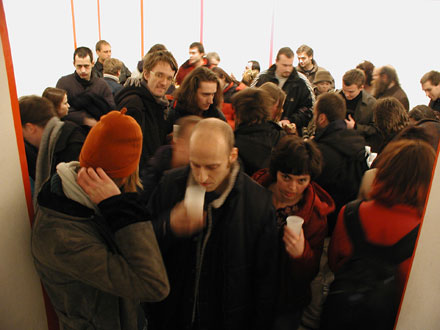281m²
281m², 2002, Instalation, prepared by Katerina Fojtikova, Aneta Mona Chisa, Tamara Moyzes, Radim Labuda, Richard Wiesner and Katerina Zavodova“…the system, the artist’s work goes through must be examined…” Brian O´Doherty, Inside the White Cube – The Ideology of the Gallery Space The Project 281 m² prepared by students of the Academy of Fine Arts and the Academy of Arts, Architecture and Design doesn’t only concern the Vaclav Spala Gallery, but all basic situations and procedures by which art is presented to the public. It touches on the entire system that art depends on and goes through. Art always provokes political thinking. In pre-1989 times, the main frame was a system of politics and ideology. In this environment, art was deprived of freedom and, in fact, excluded from it, refused an official system and created its own in its place. At that time, it didn’t make much sense to analyze art institutions as galleries or exhibition halls. Artists couldn’t use them anyways and they wanted to keep their autonomy outside of them and, if necessary, within a narrow confine of viewers. Art was defined as a form of morals in its apparent independence on an official status and ideology, without any control and without any means. This created a certain “strategy of perception”, which was part of the logic of cultural politics in the period of so-called real socialism. Art’s strongest point and its subversion lied in this function, whatever character it may have possessed. The so-called content concept prevailed, meaning the belief that art is the creation of beautiful object and is supposed to represent something outside itself, whether it is a wounded existence of various regime victims or inner feelings or a somehow transformed outside reality. In the capitalist market system, art opposed to that very system is subject to the market’s strategy. That is why a system that a work of art goes through is always analyzed and critically examined. For the way we have become accustomed to consuming art is still unusual – that art as it were is satisfied and even defines itself by itself and its functioning. Market strategies, the renting of the spaces and their operation are actually part of the new situation, although the system still doesn’t have all the functioning parts – the art market almost doesn’t exist, inherited relationships are still fixed. It will still take some time before the whole structure of the former world of art’s operation will change. One test of the contemporary post-socialistic art operation on why art is foundering was made on the Vaclav Spala Gallery by young artists and students. The exhibition institution is very important. We know that galleries are the main instrument for art communication: within their framework the choice, exclusion and representation of art is made. They are also a very important part of artists’ bibliography. The artist supports his own relevance by them. When the descendent of the socialistic art fond, the Foundation of Cesky fond umeni, took over the exhibition program at the Vaclav Spala Gallery and openly commercialized its operation, artists and students occupied the entire gallery through peaceful, non-revolutionary means – they simply rented it. They created an unusual installation by dividing the space by red tape according to the amount each of them contributed to rent. Then they filled the space with the discussion about the gallery situation. The occupation of the gallery, installation and discussion wasn’t merely a protest against former structures, which commercialized non-profit gallery, but was above all a demonstration, illustration and visualization of the system, in which art exists and where even the youngest artists have to pay for the possibility to exhibit. It is probably the first radical analysis of the so-called art operation in our context. (Pode Bal’s Brick, symbolically thrown through Veletrzni palace’s window, was a similar peaceful demonstration and denouncement of the institution). The fact that the bureaucracy of the city council’s cultural administration is not interested in solving the conflict is not such an important matter. Both this and the CFU’s victory could be expected. What is important is that the discussion on criticizing institutions and on strategies of how to successfully parasite them or how to return to substitute systems has started. Jiri Sevcik |
